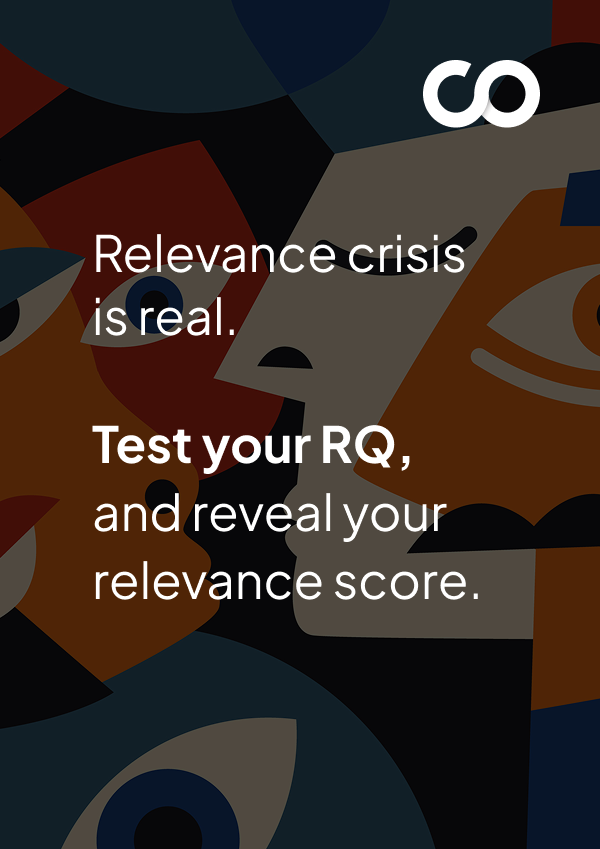Decision Intelligence
Decision Intelligence Strategy

Overwhelmed by fragmented data?
Many businesses struggle to manage fragmented data and ad-hoc reporting, resulting in missed opportunities and delayed decision-making. Poor data quality costs U.S. businesses over $3 trillion annually, wasting valuable time, budgets, and undermining confidence in decisions. Without a unified data layer and predictive insights, decisions remain reactive, limiting growth potential.
At Codewave, we help businesses shift from scattered data to intelligent, strategic action. Our approach to Decision Intelligence integrates AI, data science, and analytics to turn your data into actionable analysis, insights and forecasting. You can gain immense outcomes with Decision Intelligence.
We create unified data layers to centralize information and implement data mesh architectures to decentralize management—allowing departments to control their data while ensuring cross-team access to integrated insights. Furthermore, we operationalize large language models (LLMs) to extract deep insights from unstructured data, such as customer feedback, documents, and reports, to provide relevant predictive and prescriptive insights.
Moreover, with augmented decision-making your teams will be able to make faster, more informed decisions, driving operational efficiency and growth.

60%
Improvement in data accessibility
3X
Faster data processing
Approx. 3 Weeks
Time saved per month in manual work
25%
Reduction in operational costs
Download The Master Guide For Building Delightful, Sticky Apps In 2025.
Build your app like a PRO. Nail everything from that first lightbulb moment to the first million.
Make Data Driven Decisions Your Biggest Moat
Businesses often face challenges in converting raw data into actionable insights that can drive fast, informed decisions.
We specialize in transforming your data into a strategic asset, driving more thoughtful decision-making. Our solutions are designed to enable teams with real-time, actionable intelligence.
Data is often fragmented across systems, making it hard for businesses to access reliable, real-time information. This leads to slow and reactive decision-making, ultimately hindering business agility.
We help you consolidate your business data into a Unified Data Layer, ensuring that data from various sources is in a uniform format and accessible across departments. By doing this, we provide a single source of truth that enhances collaboration and speeds up decision-making.
Benefits You Can Expect:
- Improved Decision Speed: Real-time data access accelerates decision-making, increasing data processing speeds by 3x.
- Enhanced Collaboration: Teams across departments work from the same data, improving alignment and productivity.
Example: In the retail sector, where quick decisions on inventory and customer demand are crucial, our Unified Data Layer will help leading retail chains consolidate their data from sales, inventory, and customer feedback. This will lead to faster decisions and improved sales forecasting accuracy.
Business Intelligence (BI) tools often only offer historical data, such as past sales figures or previous customer interactions, making it difficult for companies to anticipate trends or make proactive decisions.
We integrate Predictive Insights powered by machine learning algorithms, enabling businesses to forecast trends, customer behavior, and potential risks (such as demand fluctuations, customer churn, or supply chain disruptions). This foresight allows your teams to act proactively, improving outcomes.
Benefits You Can Expect:
- Enhanced Forecasting Accuracy: Predictive models reduce forecasting errors, improving demand forecasting.
- Risk Mitigation: Early identification of potential risks enables timely interventions, thereby minimizing financial losses.
Example: Using Predictive Insights, healthcare providers can forecast patient admission rates and staffing needs, improve resource allocation, and reduce emergency room wait times.
Traditional data management creates silos, such as separate customer databases, inventory systems, or sales platforms that limit data accessibility across departments. Further, these slow down workflows and increase operational inefficiencies.
We adopt a Data Mesh architecture to decentralize data management, enabling each department to manage its data while maintaining accessibility across the organization. This decentralized approach increases agility and scalability.
Benefits You Can Expect:
- Improved Data Accessibility: With data being decentralized, you can expect a 60% improvement in real-time data accessibility for customer data across sales, marketing, and support teams.
- Providing Scalability: As your business grows, the data infrastructure can scale effortlessly to meet new demands.
Example: Suppose a global manufacturing company is facing delays in production and supply chain due to siloed data across facilities. After adopting Data Mesh, they will improve cross-facility coordination, reducing supply chain disruptions.
Without real-time access to data, businesses miss out on opportunities to make informed, timely decisions, resulting in delayed responses to market shifts or operational bottlenecks, such as missing inventory restocking opportunities due to slow sales data updates.
We integrate Augmented Decision-Making capabilities into your systems, allowing you to access real-time insights and recommendations powered by AI and predictive analytics. This enables teams to make decisions instantly.
Benefits You Can Expect:
- Smarter, Faster Decisions: Real-time decision-making enhances operational responsiveness and market agility.
- Proactive Market Adjustments: Immediate insights enable you to make swift adjustments in strategy, such as shifting inventory allocations in response to sudden changes in demand. This strategy helps minimize risks.
Example: By adopting Augmented Decision-Making, a logistics company can optimize delivery routes based on real-time traffic data, thereby improving delivery times during peak periods.
Many organizations struggle to effectively utilize advanced AI models, such as large language models (LLMs). Without proper integration, these models are underutilized. They fail to deliver timely, actionable insights such as sentiment analysis from customer feedback or automated response generation for customer support, which are crucial for improving decision-making and customer engagement.
We help you operationalize LLMs to extract deeper insights from unstructured data, such as customer feedback, product reviews, and social media content. By embedding LLMs into your workflows, we enable teams to access natural language queries and actionable insights easily. This further allows them to make data-backed decisions instantly.
Benefits You Can Expect:
- Enhanced Customer Engagement: Utilize LLMs for personalized interactions, boosting customer satisfaction.
- Reduced Manual Load: Operationalize LLMs without heavy resource demands, and save up to 3 weeks per month in manual work.
Example: A major retailer can integrate LLMs into their customer service system, enabling real-time sentiment analysis and automatic response generation. This can lead to a significant improvement in customer service response times and overall satisfaction.
A lack of data literacy and access to insights hinders teams from making informed decisions, preventing organizations from fully realizing the potential of their data.
We support a data-driven culture by integrating user-friendly tools, including self-service dashboards, real-time analytics platforms, and collaborative reporting tools. We also provide training to ensure that all teams, from marketing to operations, possess the necessary knowledge and resources to utilize data in their daily work.
Benefits You Can Expect:
Improved Decision Quality: With data-driven tools, decision-making becomes more accurate and aligned with business goals.
Empowered Teams: Employees feel more confident in their decision-making abilities, leading to increased engagement.
Example: A telecom company can implement a data-driven culture by enabling customer service teams with self-serve analytics tools.
Start leading with intelligence.
How Data and Decision Intelligence Help Across Industries
| Industry | How Data and Decision Intelligence Can Help |
| Healthcare | Let healthcare organizations predict patient outcomes, optimize resource allocation, and reduce misdiagnoses through AI-driven models for real-time decision-making. It also ensures compliance with privacy regulations while improving patient care efficiency. |
| Banking and Finance | Helps detect fraud and minimize risks by implementing predictive models for transaction monitoring and risk analysis. It enhances decision-making in fraud detection, credit scoring, and regulatory compliance, ensuring financial systems are secure and trustworthy. |
| Retail | Enables accurate demand forecasting, personalized recommendations, and inventory optimization. By integrating predictive insights, retailers can make data-driven decisions regarding product stocking, customer segmentation, and marketing campaigns, thereby enhancing both customer experience and operational efficiency. |
| Transportation and Logistics | Optimizes route planning, reduces operational errors, and enhances safety in transportation. By utilizing predictive models and AI, logistics systems can anticipate demand, optimize fleet management, and improve the efficiency and safety of autonomous driving technology. |
| Manufacturing | Improves predictive maintenance, supply chain optimization, and quality control. By analyzing data from production lines, manufacturers can anticipate equipment failures, optimize workflows, and minimize downtime, ultimately leading to cost savings and improved production efficiency. |
Transforming Data into Actionable Insights, Maximizing Business Impact
Our process is designed to ensure that data flows smoothly across your organization, is analyzed in real-time, and supports decision-making at every level.
We begin by understanding your unique business needs and challenges. During the discovery phase, we conduct a thorough assessment of your existing data infrastructure, identifying gaps, opportunities, and key areas where Decision Intelligence can drive the most value.
How It Works:
- Analysis of current data systems, tools, and workflows
- Identification of key business objectives and challenges (inefficiencies in supply chain management or poor customer engagement)
- Defining measurable goals (improving decision-making speed, increasing sales conversion rates)
Outcome: Clear identification of data gaps and actionable insights to guide future decision-making efforts.
Once we’ve assessed your current situation, we design a customized data strategy and architecture that aligns with your business objectives. We build a Unified Data Layer that consolidates fragmented data from various sources, ensuring that all stakeholders work with accurate and reliable information.
How It Works:
- Design and implementation of Unified Data Layers and Data Mesh architectures
- Establishing data governance protocols (data validation rules, access control policies) for consistency and accuracy
- Developing custom dashboards for real-time insights
Outcome: A cohesive data architecture that delivers reliable, real-time insights (sales performance, customer behavior tracking, to all teams, driving faster decision-making.
Next, we implement predictive analytics and machine learning models to extract actionable insights from your data. By operationalizing Predictive Insights and implementing Augmented Decision-Making, we enable you to forecast trends, predict customer behavior, and identify risks.
How It Works:
- Developing custom Predictive Models tailored to your business needs
- Using machine learning frameworks like TensorFlow and PyTorch
- Testing and validating models for real-world performance
Result: Predictive models that enable your teams to make proactive decisions and minimize risks.
The final step in our process is continuous monitoring and optimization. We ensure that all implemented solutions are performing as expected and delivering value. Our team continually tracks model accuracy, updates predictive algorithms, and refines insights to ensure your business stays ahead.
How It Works:
- Monitoring AI and predictive models for ongoing performance
- Refining models based on real-time feedback, such as customer behavior changes, market conditions, or operational shifts, and new data, like updated sales figures, inventory levels, or customer support interactions.
- Providing regular updates and optimizations to ensure maximum efficiency
Result: Ongoing improvements to your data solutions, ensuring sustained success and continuous alignment with business goals.
- Month-end closures are spreadsheet-driven, delaying reporting cycles.
- Expense approvals and audits require back-and-forth with no version control.
- Cashflow tracking lacks integration across departments and tools
Result:Burnt-out teams, missed insights, and late strategic decisions.
Essential Tech Stack for Decision Intelligence
| Category | Tools & Technologies |
| Predictive Insights | Machine Learning, TensorFlow, PyTorch, Scikit-learn, Predictive Analytics Tools |
| Data Mesh | Distributed Data Architecture, Apache Kafka, Kubernetes, AWS Data Mesh, Azure Synapse |
| Unified Data Layer | Data Lakes, Data Warehouses, Apache Hadoop, Snowflake, Google BigQuery |
| LLM Operationalization | OpenAI GPT, Hugging Face, MLflow, TensorFlow Serving, LangChain, Docker, Kubernetes |
| Augmented Decision-Making | AI Decision Support Systems, IBM Watson, Tableau, Power BI, DataRobot |
| Data-Driven Culture | Business Intelligence Tools, Data Governance Platforms, Data Analytics, Tableau, Power BI |
Real-World Impact of Decision Intelligence
See how organizations are improving their decision-making processes with Decision Intelligence. From optimizing workflows to driving strategic growth, businesses are witnessing tangible results in efficiency, accuracy, and scalability.
View our portfolio of success stories!
We transform companies!
Codewave is an award-winning company that transforms businesses by generating ideas, building products, and accelerating growth.
A Network of Excellence. Our partners.
Frequently asked questions
While BI focuses on analyzing historical data to understand past performance, DI goes a step further by integrating predictive analytics and AI to recommend actionable steps for future outcomes. BI answers “what happened,” whereas DI addresses “what should we do next?”
We utilize a range of tools and technologies to implement Decision Intelligence solutions. These include machine learning frameworks such as TensorFlow and PyTorch, data visualization platforms like Power BI and Tableau, and cloud services like Amazon SageMaker for model deployment. By combining these technologies, we deliver scalable and effective Decision Intelligence solutions tailored to clients’ needs.
AI, particularly generative AI, plays a crucial role in DI by simulating future scenarios, generating synthetic data, and making insights more accessible to non-technical users.
We emphasize the importance of data quality and security in Decision Intelligence projects. They implement robust data governance practices, including data cleaning, validation, and compliance with industry standards. Additionally, we employ advanced security measures to protect sensitive data, ensuring that clients’ information remains secure throughout the analytics process.
Our DI solutions are designed to seamlessly integrate with your existing IT infrastructure, including enterprise resource planning (ERP) systems, customer relationship management (CRM) platforms, and data lakes. By utilizing APIs and connectors, we ensure a seamless data flow and interoperability, minimizing disruptions to your operations.































































